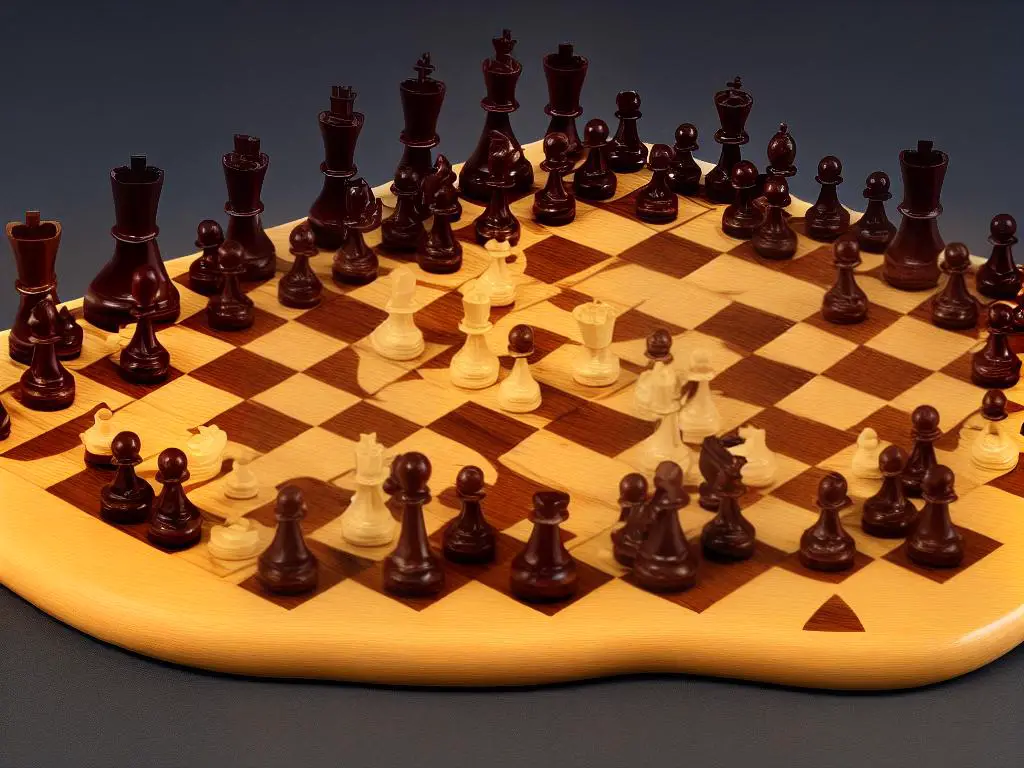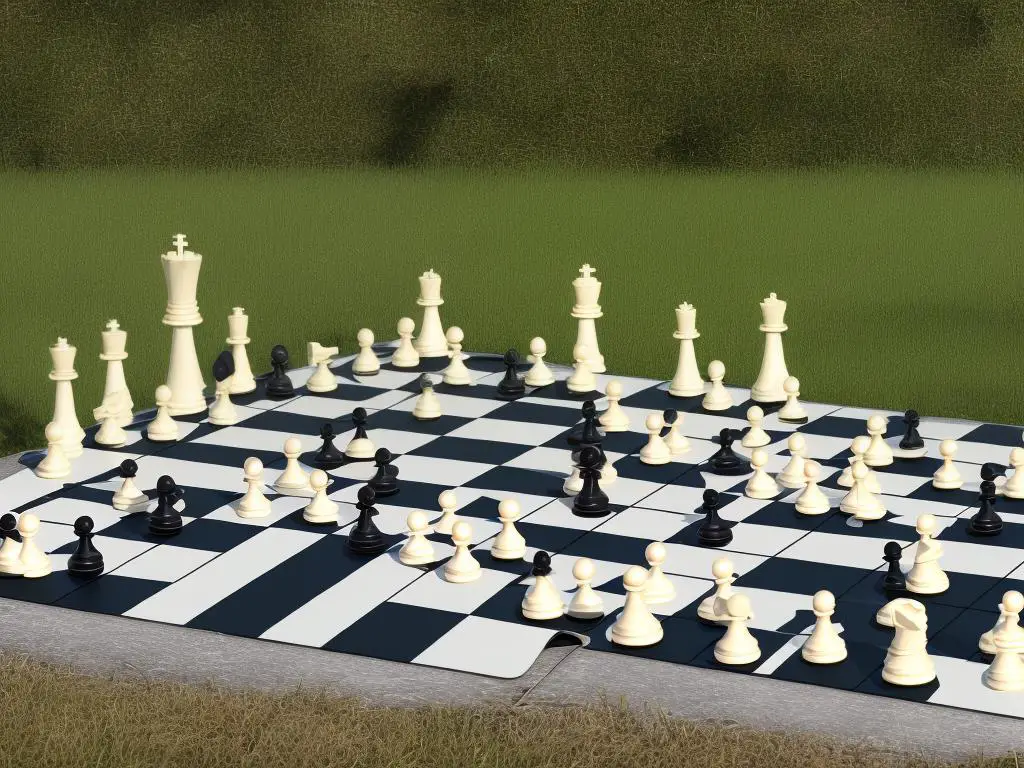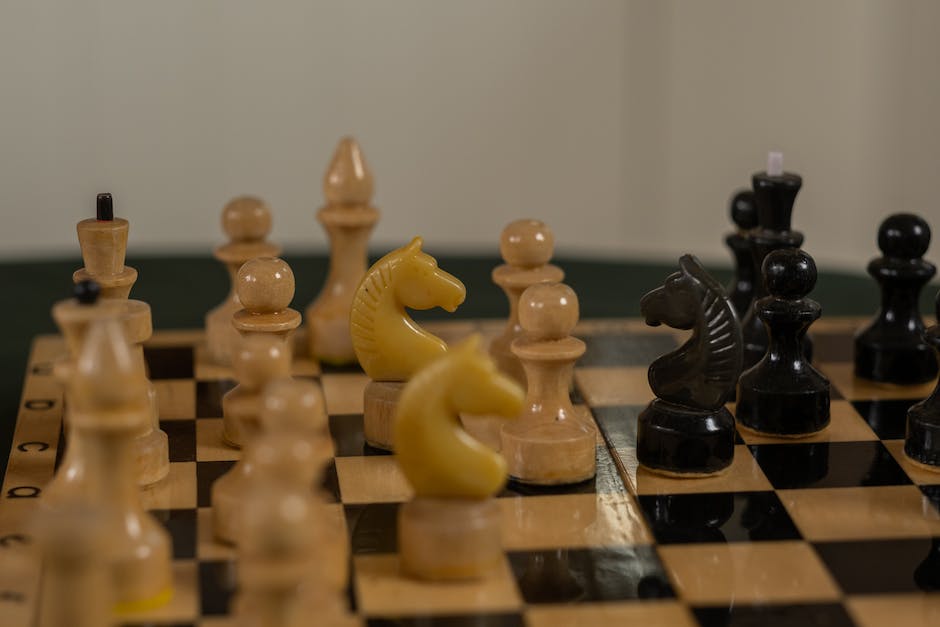Master Chess Books: The Ultimate Collection
The game of chess, with its rich history and intricate strategies, has captivated the minds of players and enthusiasts for centuries. A significant aspect of this timeless game is its vast and diverse literature, which has played a crucial role in shaping not only the way chess is taught and understood but also how it has evolved over time. This essay delves into the world of chess literature, exploring its history, famous authors, essential strategy and tactics books, as well as an analysis of curated publications for beginners and advanced players. Join us on a journey through the fascinating realms of chess knowledge and discover how these literary works have profoundly impacted the game on a global scale.
History of Chess Literature
One of the earliest known chess books dates back to the Middle Ages, specifically in the 15th century, which reflects the game’s rising popularity at the time.
The first known chess book is “Repeticion de Amores y Arte de Ajedrez,” written by Spanish poet and writer Jacobus de Cessolis. This work not only teaches the rules and strategies of chess but also employs the game as a metaphor for moral and societal issues. Additionally, 15th century manuscripts by Lucena and Damiano helped to popularize chess by teaching tactics and core elements of the game, representing the early stages of chess literature development.
Renaissance Chess Literature
The Renaissance period was a crucial time for the advancement of chess literature. Driven by the widespread distribution of printed books, numerous chess treatises were published. In particular, the landmark work “The Game and Playe of the Chesse” by William Caxton, first published in 1476, is considered the first English book on chess. This book not only discusses the chessboard and its pieces, but also explores the allegorical and moral significance of the game. In Italy, Pedro Damiano’s “Questo libro e da imparare giocare a scachi et de li partiti” (1512) became a significant work, with its opening concepts and focus on the development of pieces still resonating with modern players today.
Romantic Era Chess Literature
As the game of chess evolved, its literature also went through a transformation, especially during the Romantic Era. Chess compositions, in which the game’s positions and moves are portrayed artistically, began to gain prominence. One such influential work is “Gioachino Greco on the Game of Chess” by the Italian player Gioachino Greco, which presents a collection of tactical puzzles, opening traps, and middlegame plans. Greco’s contributions to chess literature became the foundation of the Romantic style of chess. Furthermore, the rise of newspapers and magazines in the 19th century helped disseminate chess literature more broadly, contributing to the game’s growth and development.
Modern Chess Literature
The 20th and 21st centuries have witnessed a dramatic expansion in chess literature, primarily due to advancements in technology and the rise of influential chess figures. Chess databases and powerful chess engines have revolutionized the way players analyze and learn the game, significantly impacting chess literature. During the Soviet era, chess literature flourished with works like Mikhail Botvinnik’s “One Hundred Selected Games” and Anatoly Karpov’s “My Best Games,” allowing players and enthusiasts to delve into the minds of chess masters.
The greatest influence on chess literature in recent times comes from Garry Kasparov, the former World Chess Champion and prolific writer. His book series “My Great Predecessors” traces the history of the World Chess Champions, offering valuable insights into their games and styles. This series, augmented by his work “How Life Imitates Chess,” has considerably shaped the global understanding of the philosophical and strategic dimensions of chess.
Moreover, the rise of the internet has made chess literature more accessible than ever before, providing countless educational resources and platforms for players of all levels. Websites and digital books cover every aspect of chess, from specific opening variations to endgame techniques, thus making the world of chess knowledge readily available to anyone who is interested.

Famous Chess Authors
Bobby Fischer
Another significant contributor to chess literature is Robert James “Bobby” Fischer, an American chess grandmaster who is widely regarded as one of the greatest chess players of all time. Fischer’s writings have had a profound impact on the chess world, and his most famous work, “My 60 Memorable Games,” published in 1969, is considered one of the finest chess books ever written. The book features personal commentary and detailed analysis of 60 of Fischer’s most remarkable games, revealing his thoughts, strategies, and tactics in a manner that is both instructive and accessible. His literary contributions offer invaluable insights into his genius and have influenced generations of players and enthusiasts.
Fischer has also contributed to other chess books, such as “Bobby Fischer Teaches Chess,” a highly regarded introductory instructional book that adopts a simple yet effective approach to teaching basic chess concepts, and “Fischer’s Chess Games,” a comprehensive collection of Fischer’s games, complete with analysis and annotations by various chess experts.
Garry Kasparov
Garry Kasparov is a Russian chess grandmaster, former World Chess Champion, and widely considered one of the greatest players in the history of chess. Kasparov is also a prolific author, having written or co-authored numerous books on chess, politics, and artificial intelligence.
In terms of chess literature, Kasparov’s most significant contribution is his five-volume series “My Great Predecessors.” Spanning over 2,000 pages, Kasparov examines the lives and games of the previous World Chess Champions, from Wilhelm Steinitz to Anatoly Karpov. By providing in-depth analysis of their famous games, he delves into their unique styles, strengths, and weaknesses, offering readers valuable lessons to help improve their own games.
Kasparov’s other chess-related works include “How Life Imitates Chess,” which explores the parallels between strategic decision making in chess and daily life, and “Winter is Coming,” which combines his interests in chess, politics, and history to discuss the decline of democracy and the rise of authoritarian regimes.
Jeremy Silman
Jeremy Silman is an American International Master, highly respected chess teacher, and author of numerous best-selling chess books. He is known for his ability to communicate complex ideas and strategies in an approachable and engaging way, making his books popular among players of all skill levels.
Silman’s most acclaimed work is “The Amateur’s Mind: Turning Chess Misconceptions into Chess Mastery,” in which he explores the psychological barriers and common mistakes amateur players face while trying to improve. By analyzing games played by amateur students and providing instructive commentary, Silman dispels misconceptions and helps readers develop a deeper understanding of chess strategy and tactics.
Another popular work by Silman is “How to Reassess Your Chess,” a comprehensive guide to improving overall chess understanding through strategic and positional concepts. The book has been revised and expanded multiple times since its original publication, and it remains a staple in chess literature.
Notable Chess Authors
Many influential chess authors have made significant contributions to the landscape of chess literature, helping countless players improve their understanding and enjoyment of the game. Among them are Irving Chernev, who authored the highly regarded work “Logical Chess: Move by Move,” and Yasser Seirawan, whose “Winning Chess” series is considered a classic for beginner to intermediate players. These authors, along with chess legends like Fischer, Kasparov, and Silman, have created a vast array of resources that continue to guide players in their chess journey for decades.

Chess Strategy & Tactics Books
Must-Read Chess Strategy Books
Now that you’re familiar with some of the most prominent chess authors, it’s important to delve into the chess strategy books that are considered essential for any player looking to improve their understanding of the game. These books cover a wide variety of topics, including opening principles, middle-game strategies, and endgame scenarios. Here are some highly-regarded titles that can help you become a stronger player:
-
“My System” by Aron Nimzowitsch: This classic 1925 text is widely considered as one of the best chess books ever written. Nimzowitsch introduces groundbreaking ideas such as prophylaxis, blockading, and the mysterious and complex concept of the “isolani.”
-
“The Art of the Middle Game” by Paul Keres and Alexander Kotov: Collaborating together, authors Keres and Kotov discuss various aspects of the middle game in this informative book. They analyze the strengths and weaknesses of different pawn structures and offer practical suggestions for exploiting them, touching on essential concepts such as pawn breaks, mating attacks, and more.
-
“Pawn Structure Chess” by Andrew Soltis: Soltis emphasizes the importance of pawn structures in chess, as they dictate the overall strategy for the game. He covers the most common pawn structures and the best plans associated with them, demonstrating winning strategies through classic games.
Best Chess Tactics Books
In addition to strategic understanding, mastering tactics is a crucial aspect of becoming a strong chess player. The following books offer readers a comprehensive overview of various tactical themes:
-
“Winning Chess Tactics” by Yasser Seirawan: This book is an excellent introduction to various tactical ideas, such as forks, pins, and skewers. Seirawan explains the importance of tactics in chess and provides numerous practical examples and puzzles that will help you improve your tactical vision.
-
“The Art of Attack in Chess” by Vladimir Vukovic: Another classic, Vukovic’s book focuses on middlegame attacking strategies, showcasing methods and tactics needed to initiate successful attacks. The author examines typical mating patterns, sacrificial combinations and examines the conditions necessary to create a successful attack.
-
“Imagination in Chess” by Paata Gaprindashvili: This book emphasizes the role of creativity and vision in spotting tactical opportunities. Gaprindashvili introduces themes like zwischenzug (intermediate move), windmill, and the staircase, providing over 700 practical examples and puzzles.
-
“Tactics Time!” by Tim Brennan and Anthea Carson: This book offers 1,001 chess tactics problems tailored for beginner to intermediate players. Examples are taken from real games played by amateurs, which makes the problems relatable and practical for players working on their own game.
If you’re looking to dive into the world of chess and elevate your game, regardless of your skill level, a wealth of books and literature is available to help you gain valuable insights, tactics, and strategies. By studying these classic works and putting them into practice, you can become a more formidable and knowledgeable player on the chessboard. Keep in mind that improvement is a long-term, continuous journey, and a dedicated study of strategy and tactics is essential to reaching your full potential.

Books for Beginners & Advanced Players
Chess Books for Beginners
If you’re new to chess, starting with the right instructional books is essential for building a solid foundation. Here are some of the most popular and helpful books tailored for beginners:
- Bobby Fischer Teaches Chess by Bobby Fischer, Stuart Margulies, and Don Mosenfelder: Authored by the former world champion Bobby Fischer, this book is perfect for those looking to learn chess from the ground up. With simple diagrams, easy-to-understand concepts, and a focus on essential skills like checkmating, pattern recognition, and tactics, this book serves as an excellent starting point.
- Chess for Kids by Michael Basman: Designed specifically for children learning chess, this book features clear instructions, colorful illustrations, and creative puzzles. It introduces game elements in a straightforward way, ensuring that young players grasp the basics before progressing to more advanced skills.
- Logical Chess: Move by Move by Irving Chernev: This educational book guides beginners through 33 game scenarios, analyzing and explaining each move in detail. This approach helps players build a solid understanding of the reasoning behind chess moves and strategies.
Chess Books for Intermediate Players
Once you’ve grasped the fundamentals, it’s essential to continue your education with books tailored for intermediate-level players.
- The Amateur’s Mind by Jeremy Silman: This classic chess book helps intermediate-level players to improve their thought process while playing the game. Silman analyzes common mistakes and provides step-by-step guidance on developing better strategies to overcome them.
- My System by Aron Nimzowitsch: Known as one of the most influential chess books, “My System” is an essential read for chess players looking to elevate their game. It introduces chess enthusiasts to advanced concepts like prophylaxis, pawn structures, and blockades, taking their understanding of the game to new heights.
- Winning Chess Strategies by Yasser Seirawan: This book is part of Seirawan’s “Winning Chess” series, focusing on intermediate strategies for the game. It offers practical advice on topics such as piece mobility, pawn structures, and preparing for an attack.
Chess Books for Advanced Players
Advanced players should explore books that delve into complex game strategies, tactics, and positions to refine their skills further.
- Fundamental Chess Endings by Karsten Müller and Frank Lamprecht: A comprehensive guide to endgame positions, this book holds over 400 examples and more than 1000 exercises. It is an essential resource for advanced players to polish their endgame skills.
- Dvoretsky’s Endgame Manual by Mark Dvoretsky: This widely acclaimed chess manual is a must-read for advanced players looking to master the endgame. Focusing on both theoretical positions and practical skills, Dvoretsky provides comprehensive lessons and invaluable advice in this book.
- How to Reassess Your Chess by Jeremy Silman: Targeted at advanced chess players, this book teaches players how to identify their strengths and weaknesses by evaluating their games. Silman provides a structured plan to improve those weaknesses and ultimately propel you to mastery.
Introduction to Chess Literature
There is an extensive array of chess books available to cover a wide range of topics – from beginner tutorials to more advanced strategic analyses and endgame scenarios designed for experienced players. As you become more informed on chess literature, selecting appropriate books tailored to your skill level can enable you to establish a solid foundation in chess, refine your abilities, and gradually attain mastery in the game.

Impact of Chess Literature on the Game
Evolution of Chess Literature and its Impact on the Game
The development and proliferation of chess literature have significantly contributed to the propagation and growth of the game of chess throughout history. Since the creation of the earliest known chess manual by a Spanish bishop in the 13th century, instructional and strategic guides have become an indispensable component in educating players and preserving the knowledge of the game.
One crucial aspect of the impact of chess literature on the game lies in its influence on various playing styles. Before the widespread availability of chess books, players depended on local clubs and communities to advance their strategies and hone their skills. However, the release of foundational works such as François-André Danican Philidor’s “Analyse du jeu des Échecs” (1749) and Wilhelm Steinitz’s “The Modern Chess Instructor” (1889) provided valuable insights into specific tactics and strategic thinking. These insightful works also granted players from different regions the opportunity to learn from one another’s distinct styles and approaches, ultimately promoting the formulation of creative and innovative playing methods.
The Impact of Chess Literature on the Rise of Prodigies and Grandmasters
The continued growth and refinement of chess literature have contributed significantly to the rise of prodigies and grandmasters worldwide. In the 20th century, instructional books like Aron Nimzowitsch’s “My System” (1925) and Richard Réti’s “Modern Ideas in Chess” (1923) introduced groundbreaking ideas about positional play, pawn structures, and playing dynamically. These works drastically raised the level of play among chess enthusiasts and helped produce some of the game’s most celebrated prodigies, including the likes of Bobby Fischer and Garry Kasparov.
Moreover, these and other aspects of chess literature have led to the creation of a vast repository of curated game collections and annotations. This extensive engagement from both world-class players and authors has provided a deeper, more nuanced understanding of the game. Aspiring players can now analyze the games of grandmasters, learning from their moves and building upon their knowledge. This has not only contributed to the rise of chess prodigies but has also raised the overall skill level within the chess community.
Popularization of Chess Among a Wider Audience
Chess literature has also played a vital role in popularizing the game and making it accessible to a wider audience. Before the widespread availability of instructional works, chess could be perceived as an overly esoteric pursuit, enjoyed primarily by the privileged elite. However, by offering practical guidance and deconstructing the complex principles of the game in an accessible format, chess literature has made the game more approachable and enjoyable to players of all levels.
Additionally, chess literature has played a significant role in the teaching of the game to children and students. Introductory texts such as Irving Chernev’s “Logical Chess: Move by Move” (1957) and Fred Reinfeld’s “1001 Winning Chess Sacrifices and Combinations” (1955) have introduced countless beginners to the joys and challenges of the game. These books, and many others, have made chess instruction more accessible and fostered forward-thinking chess education methods.
Furthermore, the rise of autobiographies and biographies of prominent players has helped to create a greater sense of personality and narrative within the chess world. Works like Garry Kasparov’s “My Great Predecessors” series (2003–2006) not only provide invaluable insights into the moves and motivations of some of history’s greatest players but also paint vivid, relatable portraits of their lives and struggles. In doing so, these works contribute to the popularization of chess by allowing it to be understood and appreciated on a more personal and emotional level.
In conclusion, chess literature has significantly shaped the game of chess throughout history, from refining styles of play and contributing to the rise of prodigies and grandmasters to popularizing the sport and making it more accessible to a wider audience. As new ideas, technologies, and players continue to influence and advance the game, chess literature will undoubtedly continue to play a crucial role in the evolution, promotion, and celebration of this rich and fascinating pursuit.

Throughout history, chess literature has played an indispensable role in shaping the rich tapestry of the game we know and love today. From the Middle Ages to the modern era, an array of exceptional authors have contributed invaluable insights, tactics, and strategies within their books, making these literary treasures indispensable for players of all levels of expertise. As we delve into the myriad works that have illuminated our understanding of this ancient game, it becomes evident that chess literature has not only driven the evolution of the game itself but has also served to inspire countless individuals to pursue their passion for chess. Ultimately, the enduring legacy of chess literature will continue to enthrall, educate, and empower players for generations to come.


























































